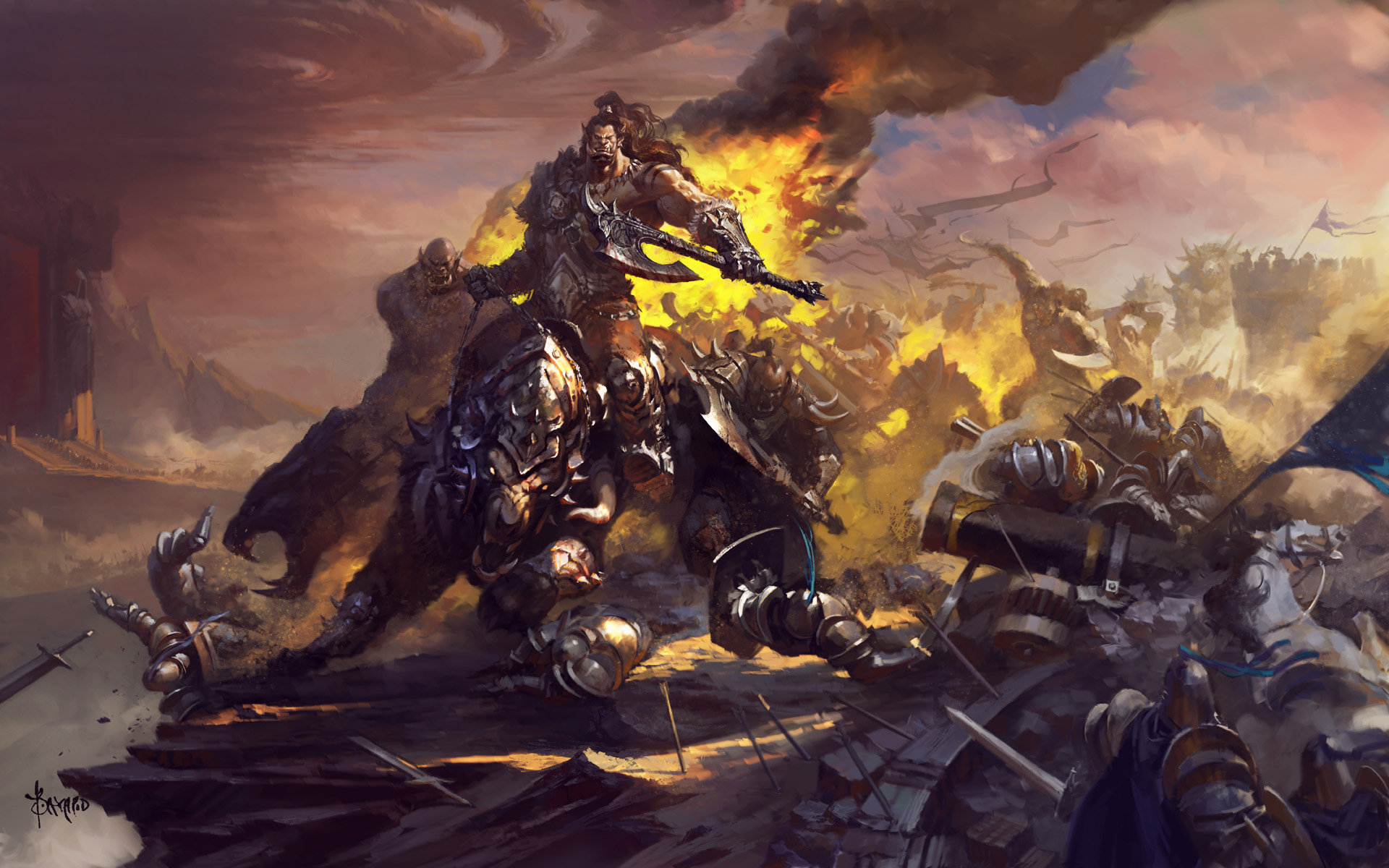The Second Northern War
A war of scars that don't fade.
The Conflict
Prelude
Deep in Severní, war was afoot. The stalemate of the First Northern War left the many tribes of orcs belleagered. Their alliance with the kobolds and goblins splintered. The goblins raided the northeast coast of Dewa, while the kobolds retreated deep beyond The North Slope, supposedly called back by their gods, but with their primary military forces decimated. Although the Weigar clan held the border with Severní, they were weak at best, their defenses in shambles, and cooperating with the human alliances. The humans fared little better, although they kept up appearances. Their battle was hardly a trounce, costing thousands of lives and even more in gold. Moreover, battles over the borders between Severní, The Golden Empire, Formosa, and Ezo meant that trust was in short supply. Only when Formosa and Ezo made a non-aggression pact and began defending Formosan territory together did The Confederation organize a peace treaty for all three countries. In The First Northern Wars, humans were their own worst enemies. Nevertheless, they vanquished the mob hordes that descended, forced a treaty, and were demanding retribution from the orcs that surrendered. And it all pissed Kurdan off. Kurdan was off to war at 8, and although he was fearsome on the front lines, nearly died when he took a lance through the chest. The weapon shattered his rib-cage, ripped through his back, and missed his heart only by inches. He was left aloft on the shaft of the lance as his arms and knees were snapped so he couldn't throttle anyone else who passed by. He was an example during the battle, an example of how humans thought of the North: so worthless, death wasn't even necessary, only to bleed out slowly upon the weapon that slayed you. By pure chance, the human front was pushed back, and a kobold healer was able to aid Kurdan, who was hastily sent off to his family's tribe. That's what pissed him off. Sitting at home, relearning how to walk, relearning how to wield an axe, and watching The North surrender. Peace and reparations to the humans. Fools, they all were. Kurdan worked his was to the top of his tribe by beheading his elder, slaying his wives and slaves, and demanding anyone in the town who thought they were stronger fight him. He killed 14 more before they knelt to him. He held power over one of the strongest tribes in the region, but he had ambitions. He began roaming to every region of Severní, meeting with old enemies. Anyone who would not speak to them as equals, he killed. Anyone who challenged him or his rule, he killed. Anyone who refused to do as he said, he enslaved. In time, he grew the largest army of orcs in the northern continent. Because Kurdan had a plan. A plan no human had ever seen before. It would take time, but he had time to spare. 10 years of civil war with the orcish hordes. Only orcs and their slaves, no other weak races. There was no space for weakness here. Exploit the precarious alliance of all three nations of the north, and kill everyone in the process with the greatest army on Earth.
Deployment
Battlefield
The Engagement
Aftermath
Historical Significance
Legacy
Remove these ads. Join the Worldbuilders Guild










Comments